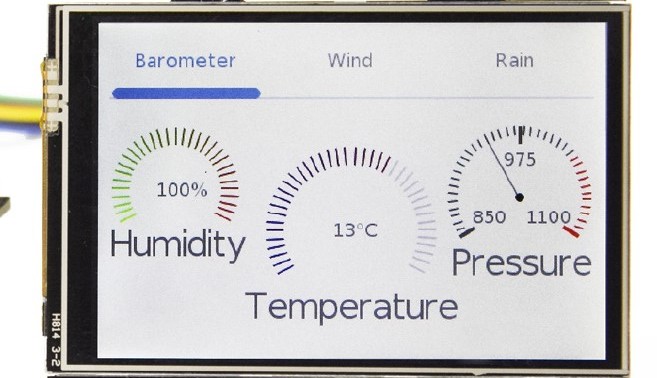Free Fresh Article: GUI with Touch — for ESP32, RPi & Co.

With the compliments of the Elektor Labs and Editorial teams, and our best wishes for the new year, here comes another previously unpublished article that's free to download by all registered Elektor e-zine readers. "Free Fresh Articles" are published at two-weekly intervals in the Elektor e-zine, alternating with "Free Back Articles". This time we have a Graphic User Interface (GUI) with touch control that’s remarkable for two things: First, it’s one and the same piece of hardware running happily on at least three popular microcontroller platforms: ESP32, ESP8266, and Raspberry Pi. Second, it employs elements from the LittlevGL library which comes with an MIT licence and produces code for many 16-, 32- and 64-bit microcontrollers.
With the compliments of the Elektor Labs and Editorial teams, and our best wishes for the New Year, here comes another previously unpublished article that's free to download by all registered Elektor e-zine readers. "Free Fresh Articles" are published at two-weekly intervals in the Elektor e-zine, alternating with "Free Back Articles".
This time we have a Graphic User Interface (GUI) with touchscreen control that’s remarkable for two things. First, it’s one and the same piece of hardware running happily on at least three popular microcontroller platforms: ESP32, ESP8266, and Raspberry Pi. Second, it employs elements from the LittlevGL library which comes with an MIT licence and produces code for many 16-, 32- and 64-bit microcontrollers.
It’s doesn’t get more versatile and open-source than this so switch on your number crunchers and off to your free article right here.
This time we have a Graphic User Interface (GUI) with touchscreen control that’s remarkable for two things. First, it’s one and the same piece of hardware running happily on at least three popular microcontroller platforms: ESP32, ESP8266, and Raspberry Pi. Second, it employs elements from the LittlevGL library which comes with an MIT licence and produces code for many 16-, 32- and 64-bit microcontrollers.
It’s doesn’t get more versatile and open-source than this so switch on your number crunchers and off to your free article right here.
